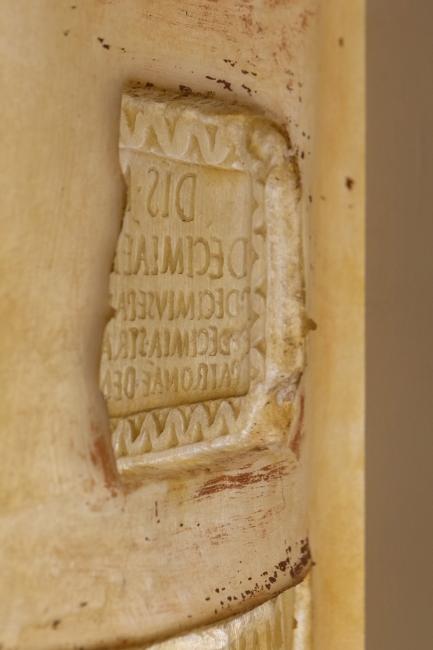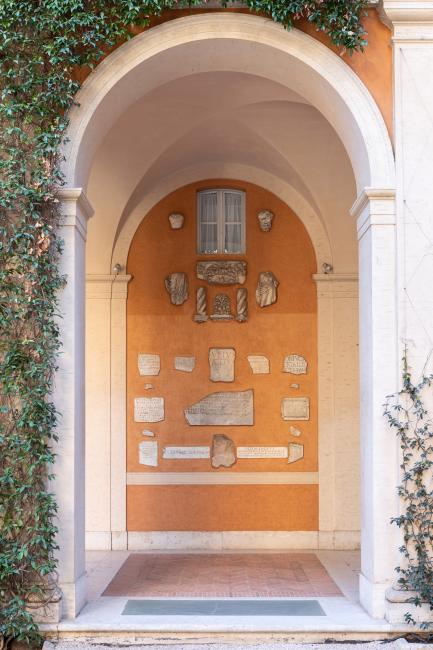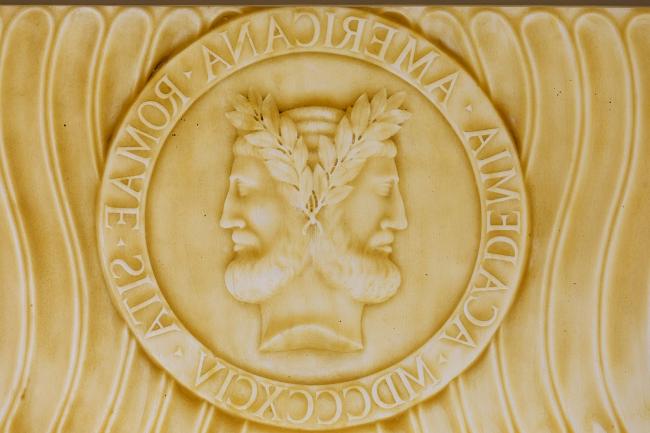
Jorge Otero-PailosDistributed Monuments
Jorge Otero-Pailos works in latex casts, a conservation method used to remove dust and debris from historic monuments. During his Residency at the American Academy in Rome, he made casts of the building’s surfaces—including floors, architectural details, and the spolia-studded walls of the courtyard—which were then placed in a gigantic, back-lit frame. The casts preserve the topography of these surfaces along with the dust that had settled on them, re-presenting the longitudinal history of a building and its environment.
At the conceptual core of this work lies the matter of permanence. Monuments like those that define Rome were built to endure. But Otero-Pailos reveals the contingency of every surface, including those of monuments: they become dust just as they accrue it. “Buildings,” he says, “lend recognizable form to a dust that was formless and chaotic.” In the end, it is dust that remains—including the debris created by human activity and industry. Traces of ancient Roman silver mining still apparent in the ice packs of the Arctic, for example, suggest that pollution itself is the most lasting of human creations.
There are ethical implications to this vision, underscoring our responsibility to the environment in the short and long term. But the implications are also spiritual, beyond time and our ability to measure it. The dust that surrounds us also is us. It makes up buildings and falls away again into the atmosphere, reminding us of stardust and the materiality of creation itself. (ER)
About the artist
Born in Madrid, Spain, in 1971, Jorge Otero-Pailos studied architecture at Cornell University and earned a doctorate in architecture from MIT in 2002. Now based in New York, Otero-Pailos is an artist and preservationist, as well as a professor and director of the Historic Preservation Program in the Graduate School of Architecture, Planning, and Preservation at Columbia University. Drawing on his formal training in architecture, he has created artworks with materials inspired by the “preservationist toolbox” such as historical reenactments, smell reconstruction, and the actual preservation of historical structures. Otero-Pailos often applies natural liquid latex – a conservator’s tool – as a kind of skin to extract dust, dirt, and other residual matter from the surfaces of buildings. The Ethics of Dust, an ongoing, decade-long series using this method, has been staged in Venice, London, and San Francisco. He is also known for his casts of famous monuments, like Trajan’s Column, that help to expose histories and memories embedded in places and record their states of transformation. He participated in the 2009 Venice Biennale and the Chicago Architecture Biennial in 2018–19. Otero-Pailos is the 2022 Roy Lichtenstein Artist in Residence at the American Academy in Rome.







